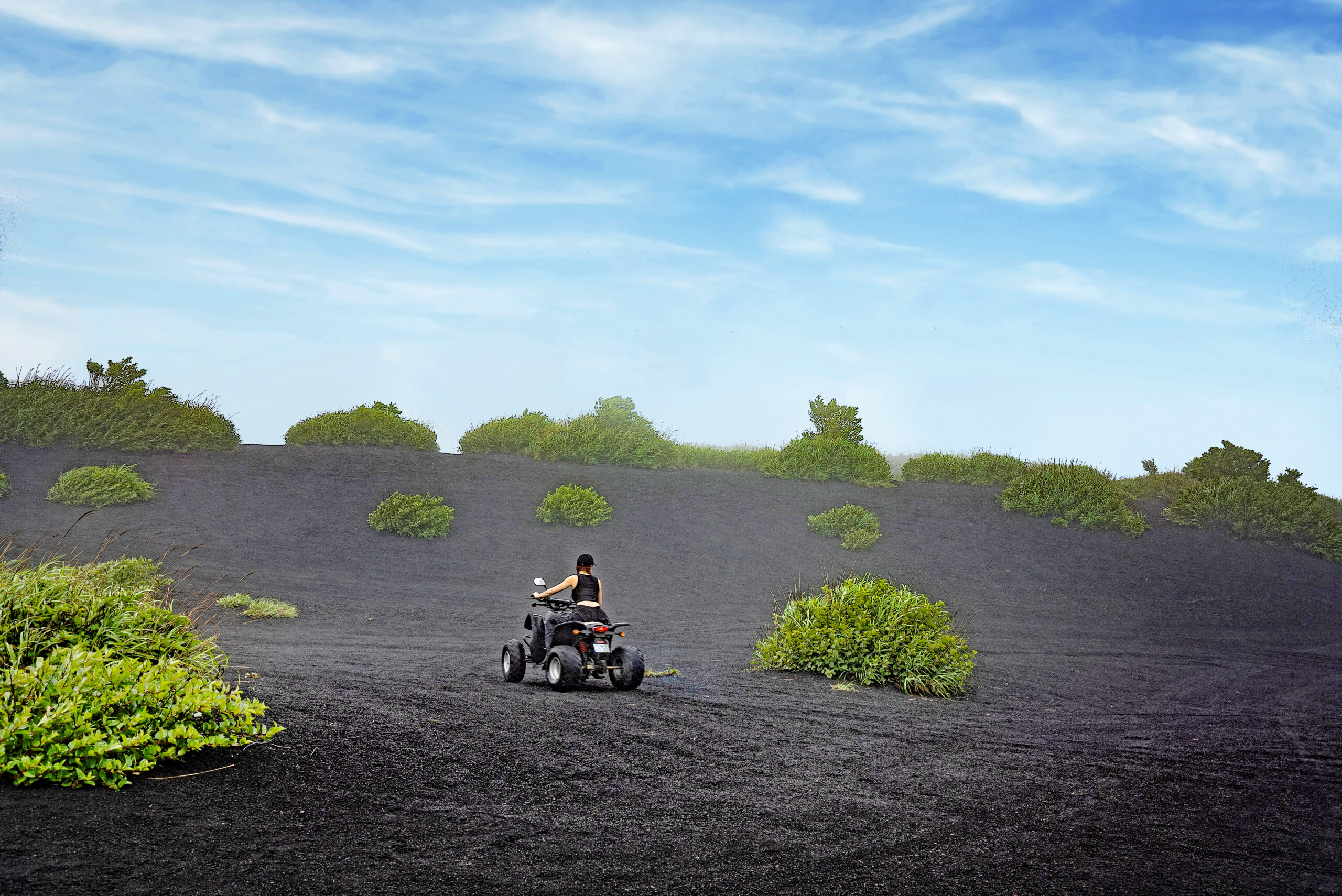
5 Outdoor Adventures on Oshima, Tokyo’s ‘Black Desert Island’
Though technically part of Tokyo, Oshima—the nearest of the Izu Islands to central Tokyo—feels worlds apart from the city’s usual pace and polish. Its dramatic landscapes of charcoal-colored beaches, rugged hiking trails, and raw, volcanic terrain speak to the island’s fiery origins and untamed spirit. Just a short ferry ride from the capital, Oshima offers a stark, refreshing contrast to the ordered life across the bay.
Shaped over centuries by eruptions from Mt. Mihara, its still-active volcano, Oshima is a geologist’s dream and a traveler’s escape. But beyond the rocks and black sand, you’ll find cozy seaside eateries, tight-knit fishing and farming communities, and a laid-back rhythm that invites you to slow down and live on island time—if only for a little while.
Here are five unmissable outdoor experiences unique to Oshima.
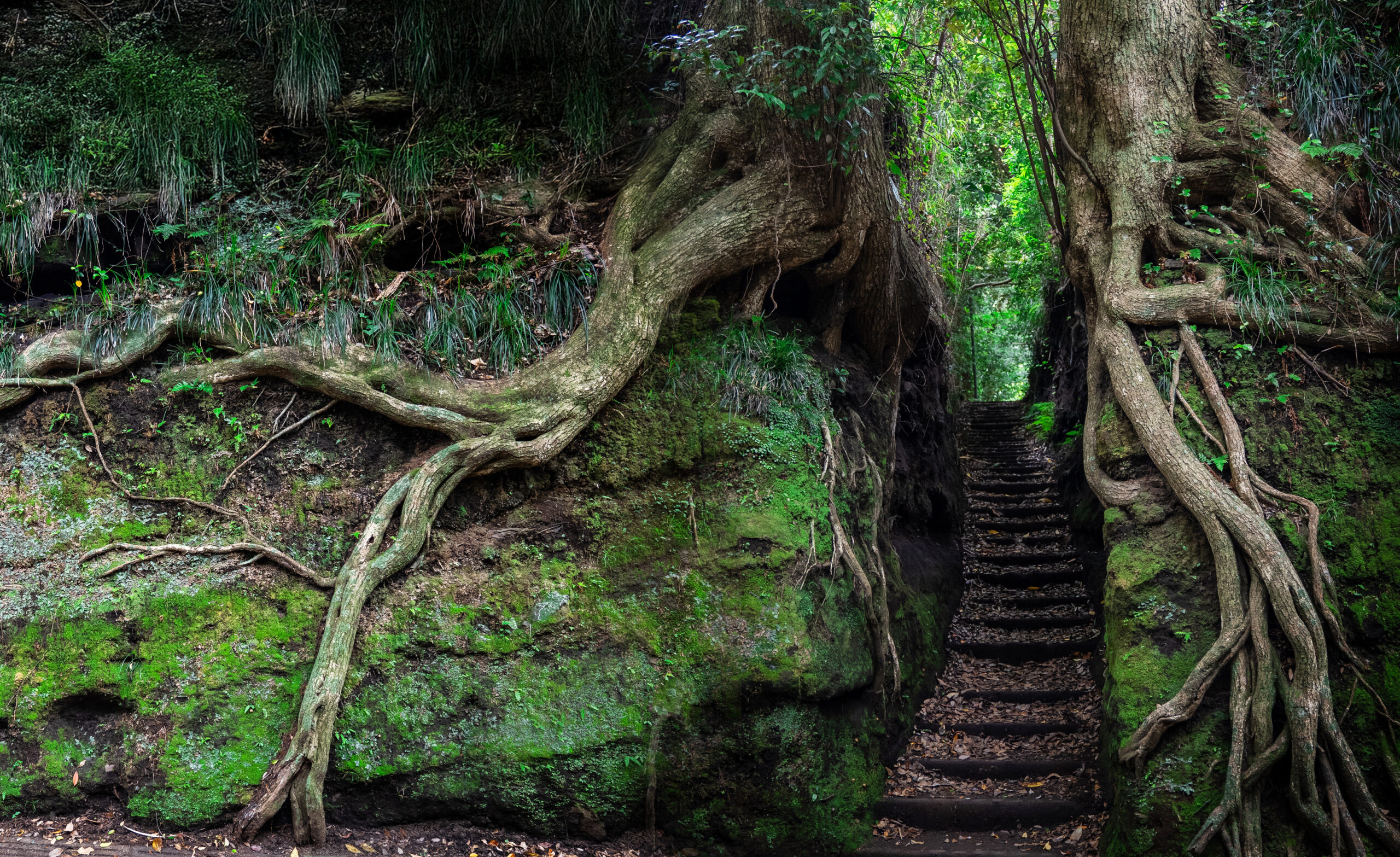
1. Sacred Stops and Scenic Walks: Discover Senzu no Kiritoshi and Hajikama Shrine
Begin your Oshima journey at Senzu no Kiritoshi, a narrow stone stairway that cuts through a wall of rock between two centuries-old trees. Walking this shaded path feels like stepping into the past—you’re surrounded by moss-covered stones, towering trees, and nothing but the distant sounds of wind and birds.
Just a short bicycle ride away is Hajikama Shrine, a peaceful, timeworn site with deep local roots. A path leading up to the shrine opens with a torii gate, which blends seamlessly into its lush green forest surroundings. The shrine itself, modest but beautifully weathered, is dedicated to the island’s guardians. Surrounded by dense greenery and camellia trees, it feels almost hidden, a secret locals have kept from the crowds.
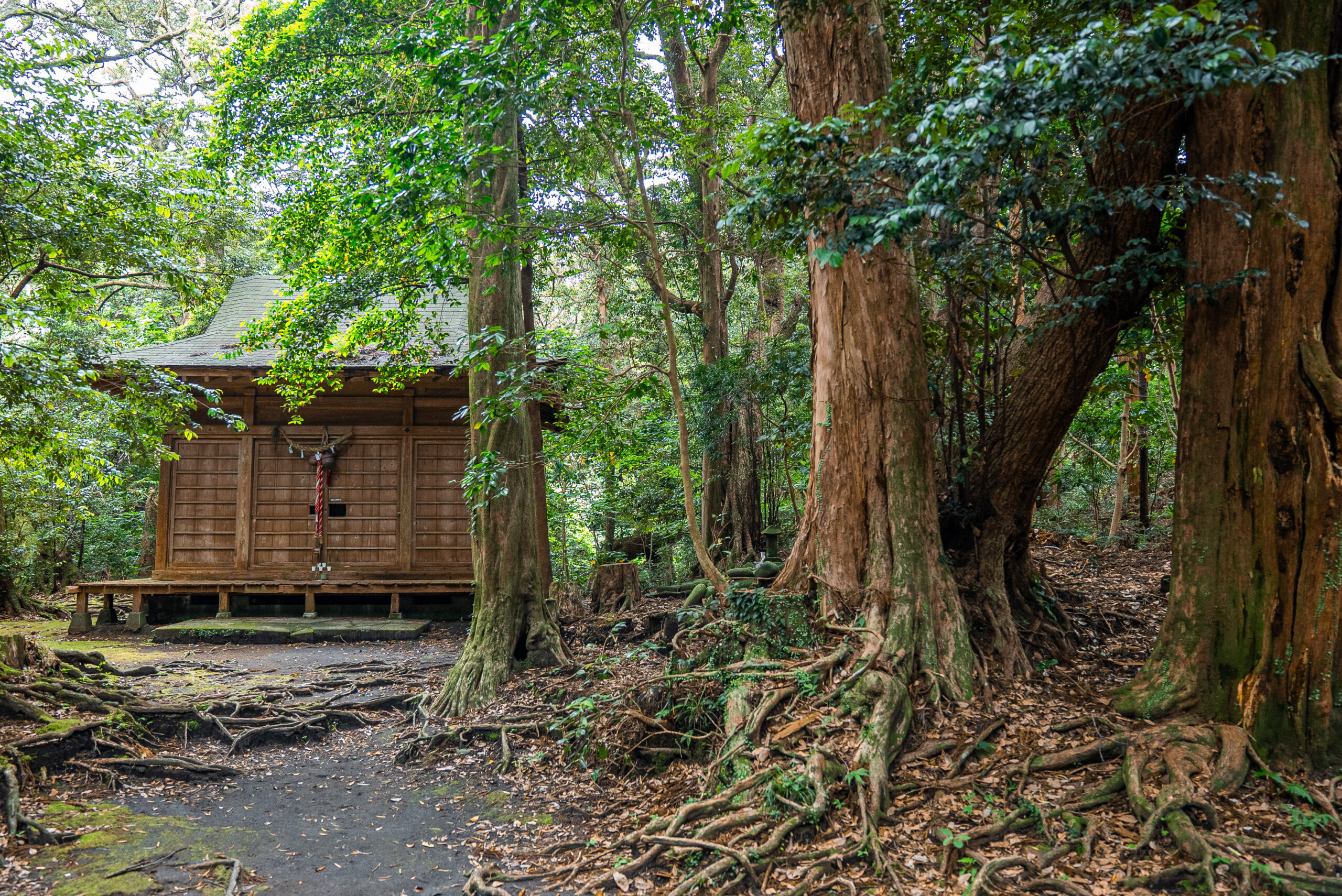
These two locations are particularly beautiful in spring when the trees and flowers burst into vibrant colors. Together, they offer a gentle introduction to what travelers are yet to discover on this remote island: a blend of natural and historical elements untouched by modern tourism
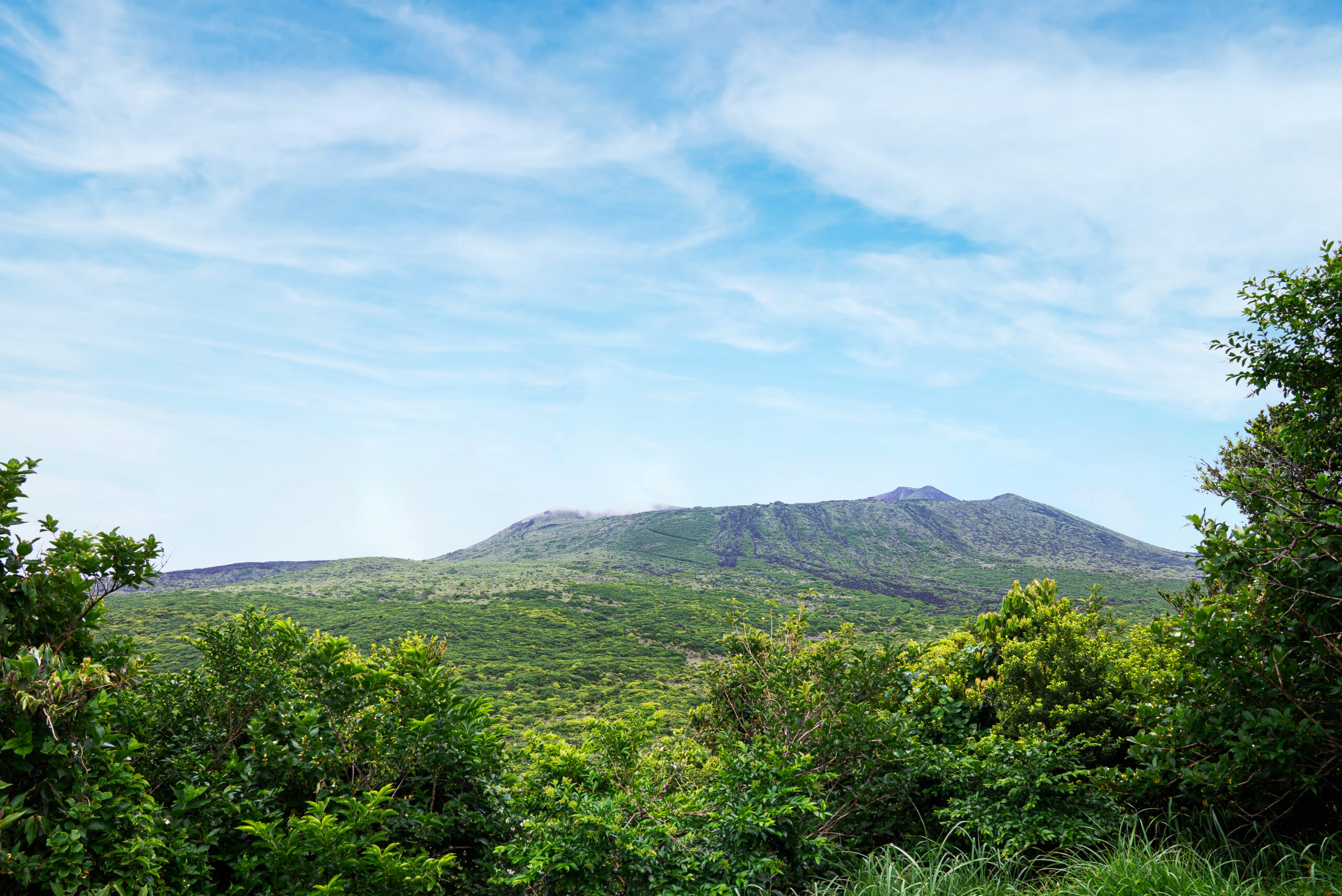
2. Conquer the Volcano: Trekking Mt. Mihara
Rising 758 meters above sea level, Mt. Mihara is the dynamic center of Oshima’s blackened, volcanic terrain. It remains active (and closely monitored) to this day, with its last steam eruption occurring in 1990. Today, it’s home to a well-marked 2.5-kilometer crater rim trail that’s accessible to both seasoned hikers and casual trekkers.
On clear days, panoramic views stretch across the Izu Peninsula and even to Mt. Fuji. The trail offers more than just scenery—it’s a unique hiking experience across hardened magma, sulfur vents, and seemingly endless trails of black scoria.
The most popular route begins at the Mt. Mihara Summit Entrance (Mihara-san Sancho-guchi) and loops around the crater before descending toward the Ura-Sabaku, or “Black Desert.” The full course covers 7.9 kilometers and typically takes around 2.5 hours to complete. Summer is the best season to visit, with favorable weather and limited bus service operating from April to September. Be sure to check schedules in advance, as buses are infrequent. Alternatively, the trail is accessible by car.
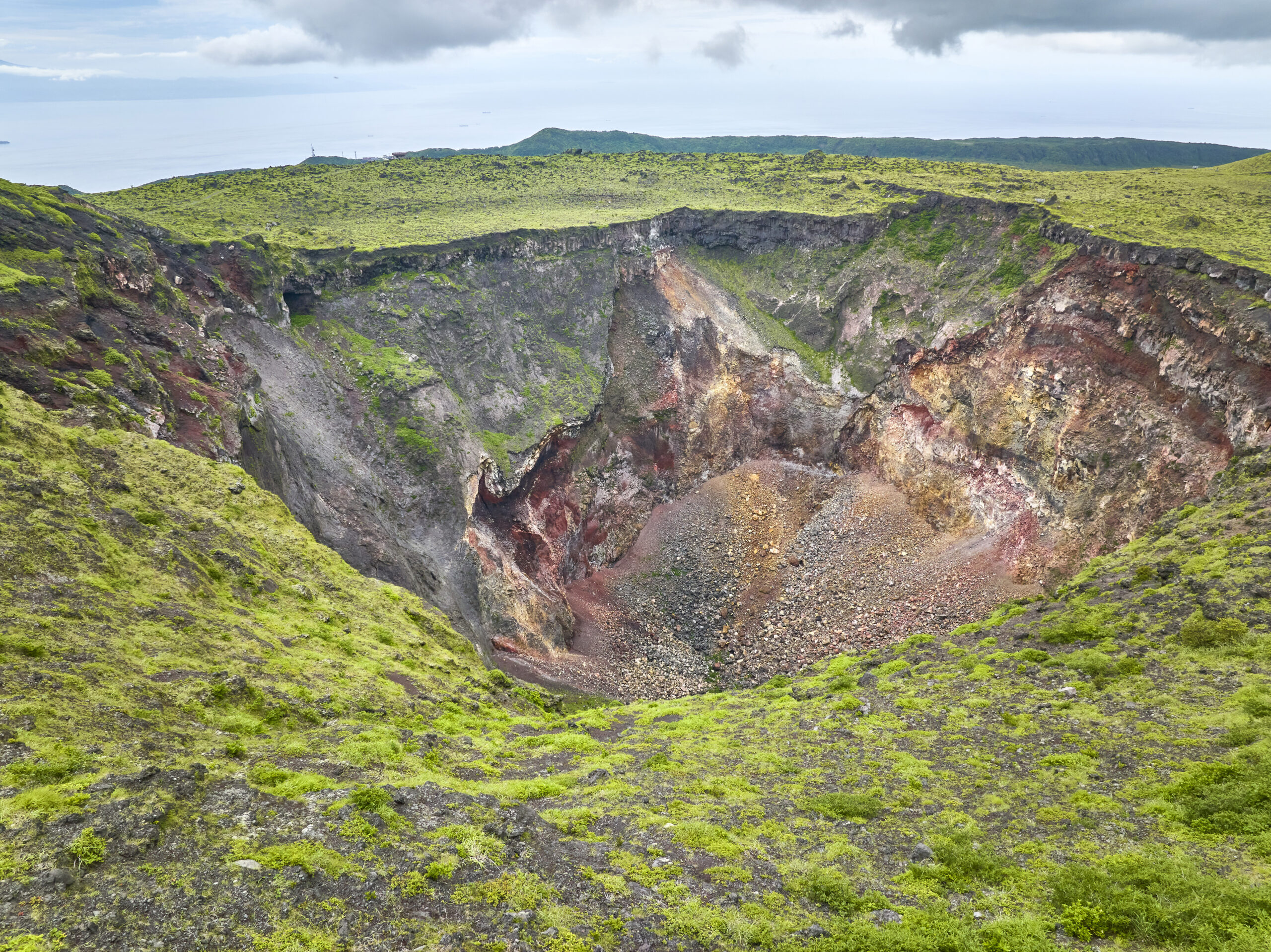
Before heading out to Mt. Mihara, come prepared with proper footwear, clothing, water, and personal essentials, as there are few public facilities around the mountain, and restrooms or vending machines are scarce.

3. Ride Through the Black Desert: Buggy Adventures in Urasabaku
East of Mt. Mihara lies Ura-Sabaku, Oshima’s “Black Desert”—a vast, surreal landscape shaped by lava flows from past eruptions. This plain of volcanic rock and jagged terrain is often described as one of Japan’s most unique natural environments, and it is the country’s only designated desert. During sunrise or sunset, the golden light transforms the scene into something cinematic, almost otherworldly.
One of the most thrilling ways to explore Ura-Sabaku is on a quad bike or “buggy.” Local guesthouse BookTeaBed IZU-OSHIMA offers guided tours that take riders through Oshima’s winding roads and up to the desert, where you can navigate the scorched terrain at your own pace. Tours last around two hours and are offered at three start times (9:00, 11:45, and 14:30). Prices range from ¥11,000 to ¥18,000 per person, depending on your accommodation status and whether you rent optional gear like gloves, coats, or sunglasses.
Riding across this dramatic volcanic plain, with Mt. Mihara rising in the distance, is an unforgettable experience. Note that participants must hold a valid driver’s license, as the route includes public roads. But if you don’t drive—or simply prefer to explore on foot—the desert is just as captivating on a hike. You can reach it by walking from the township below, or by driving and parking nearby. Once you set foot on Ura-Sabaku, you’ll notice the ground crunch and squeak beneath your feet, like walking across the surface of a distant moon.
As with Mt. Mihara, there is little shade, no water, and limited public facilities, so be sure to bring everything you’ll need before heading out to this remote part of the island.
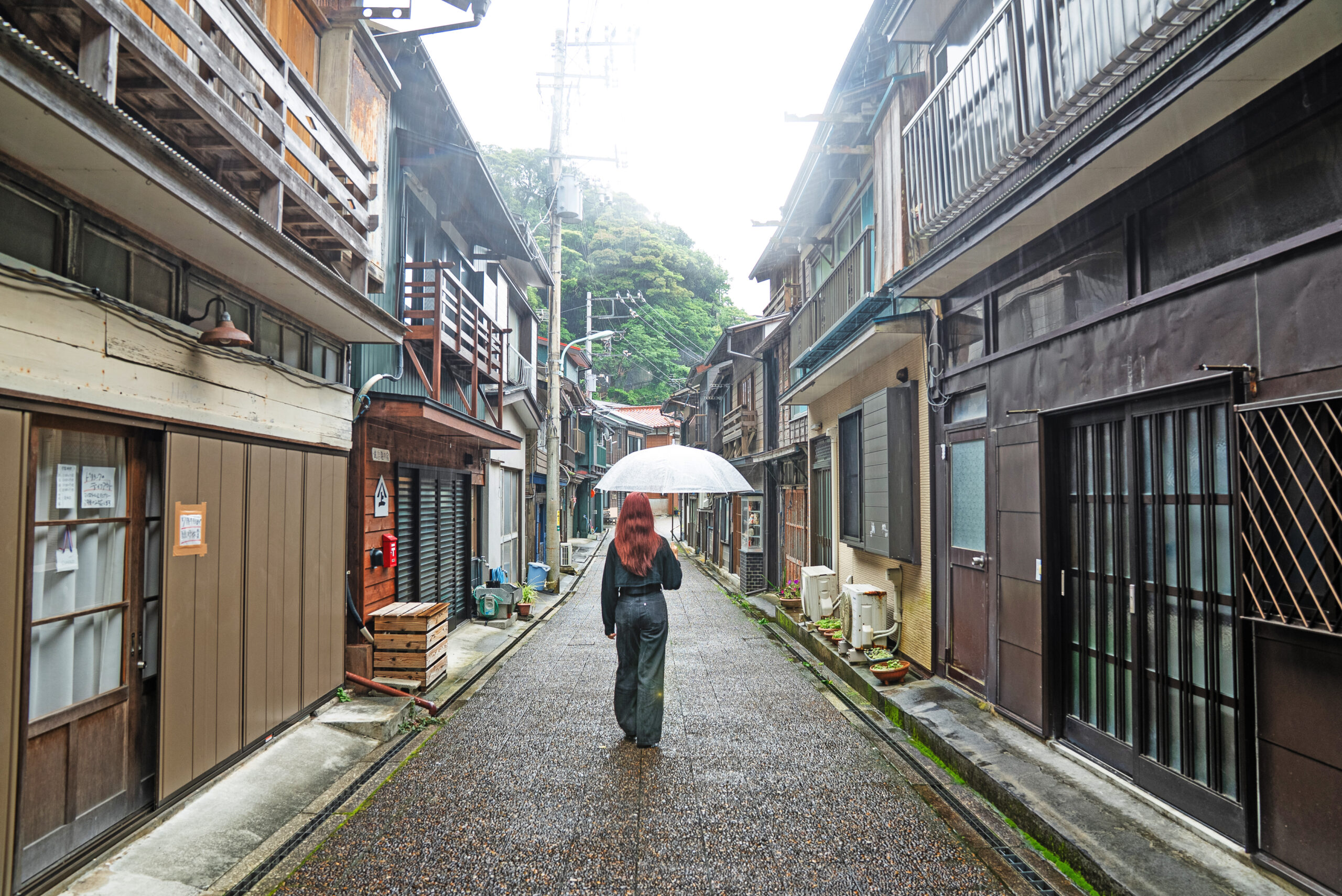
4. Slow Down by the Sea: Rest and Recharge at Habu Port
Tucked into the lush southern edge of Oshima, Habu Port is a tranquil harbor town with a quiet charm. Pocket-sized storefronts and gentle walking paths line both sides of the bay, where local fishing boats bob in calm waters protected by cliffs. While known for its nostalgic alleyways, traditional inns, and cozy eateries, Habu Port also holds a dramatic past shaped by natural forces. Born from a volcanic crater in the 9th century and later reshaped by a tsunami in 1703, the port gradually opened to the sea. Today, you can still spot traces of its dramatic past from the scenic Habu Port Lookout, which offers sweeping views of the bay and town below.
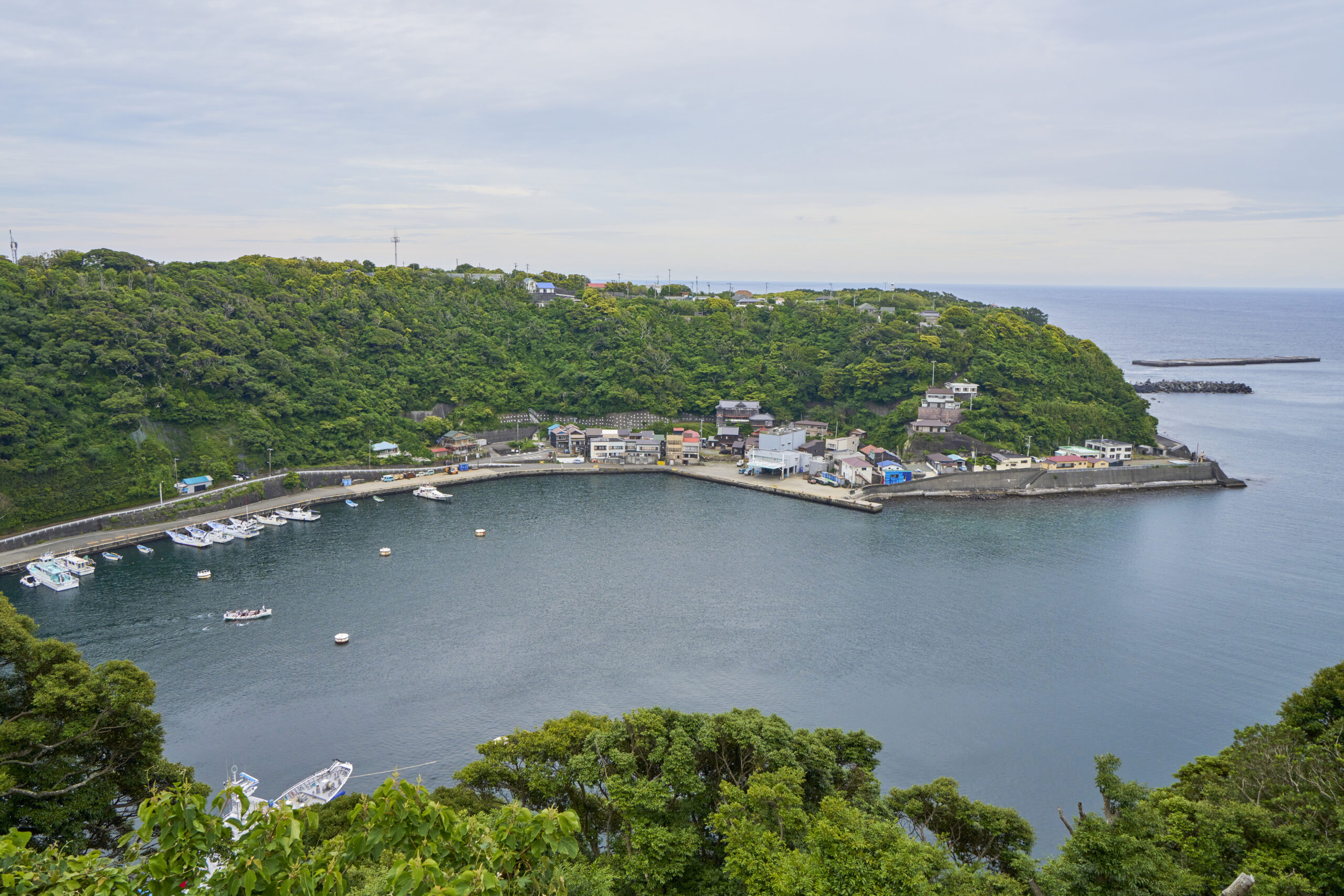
Habu Port’s retro-style bar cafes—like Hav Cafe and Cafe Tohri Nabana Shokudo—add to the charm with vintage decor and a laid-back seaside vibe, making them ideal spots to pause and soak in the atmosphere.
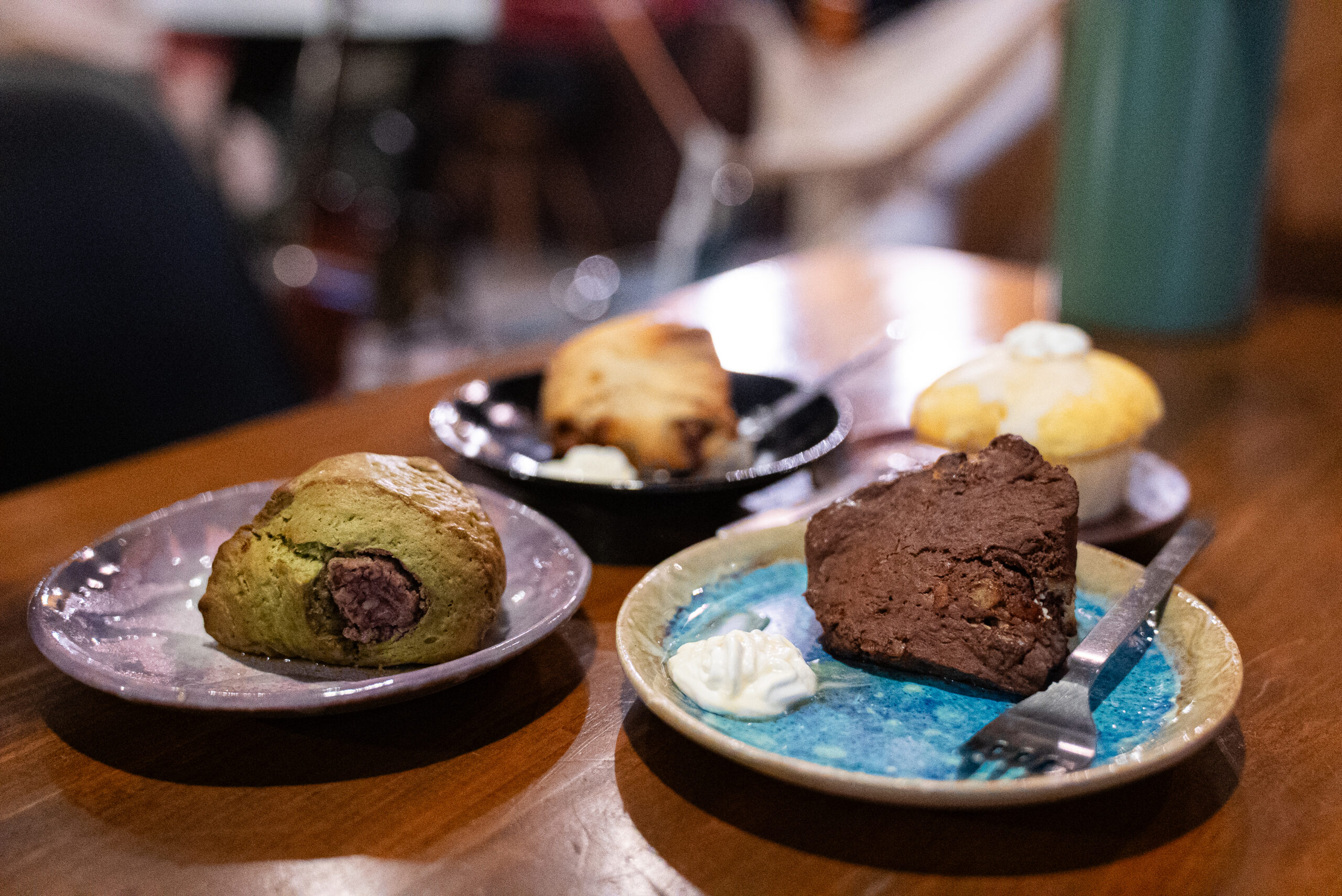
On the road between the Motomachi and Habu ports, you’ll find a few more must-see stops. One of the most striking is The Great Road Cut, nicknamed “Big Baumkuchen” for its resemblance to a sliced German cake.
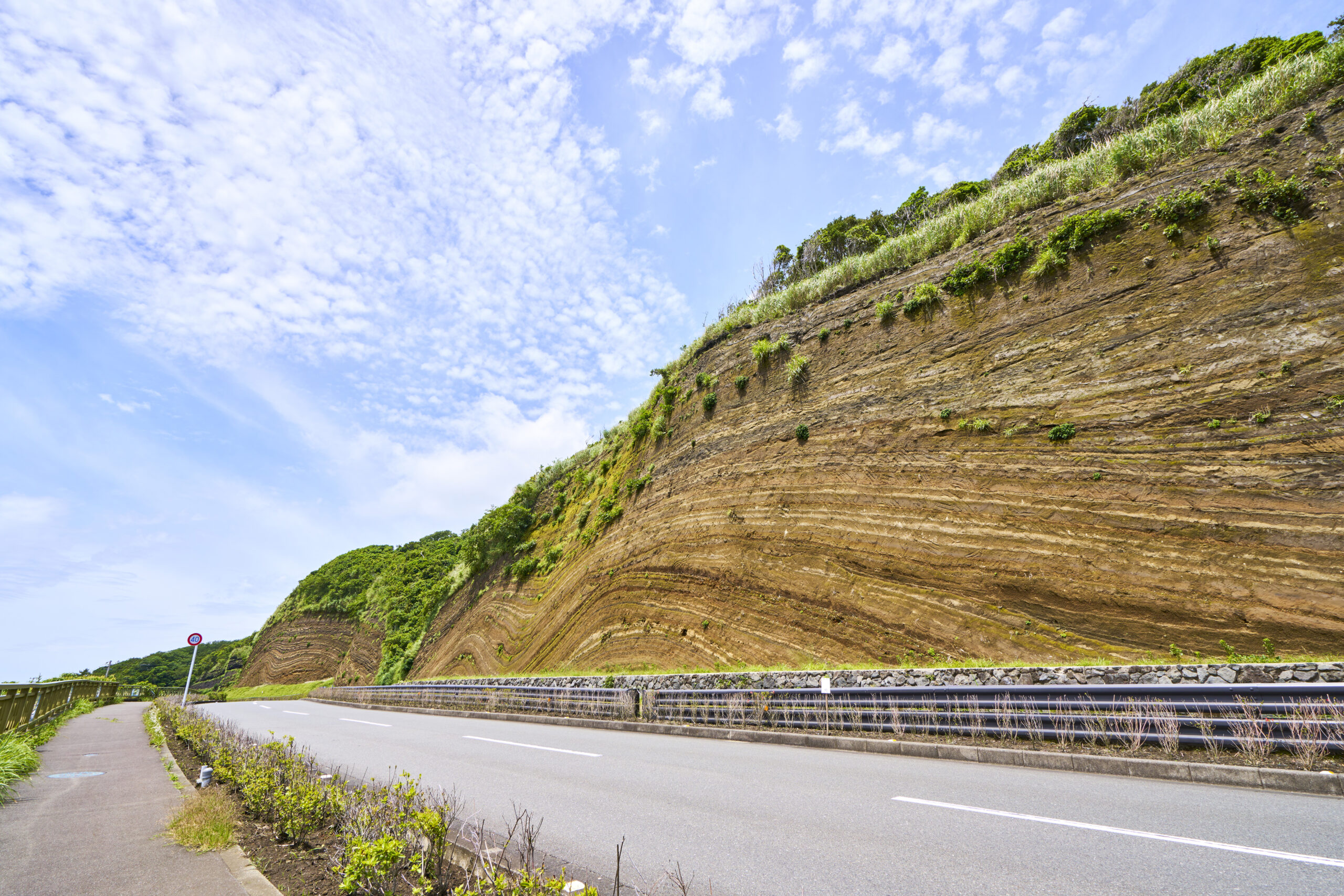
The winding formation displays roughly 12,000 to 15,000 years of Oshima’s volcanic history, traceable through each of the varying layers of sedimentary rock.
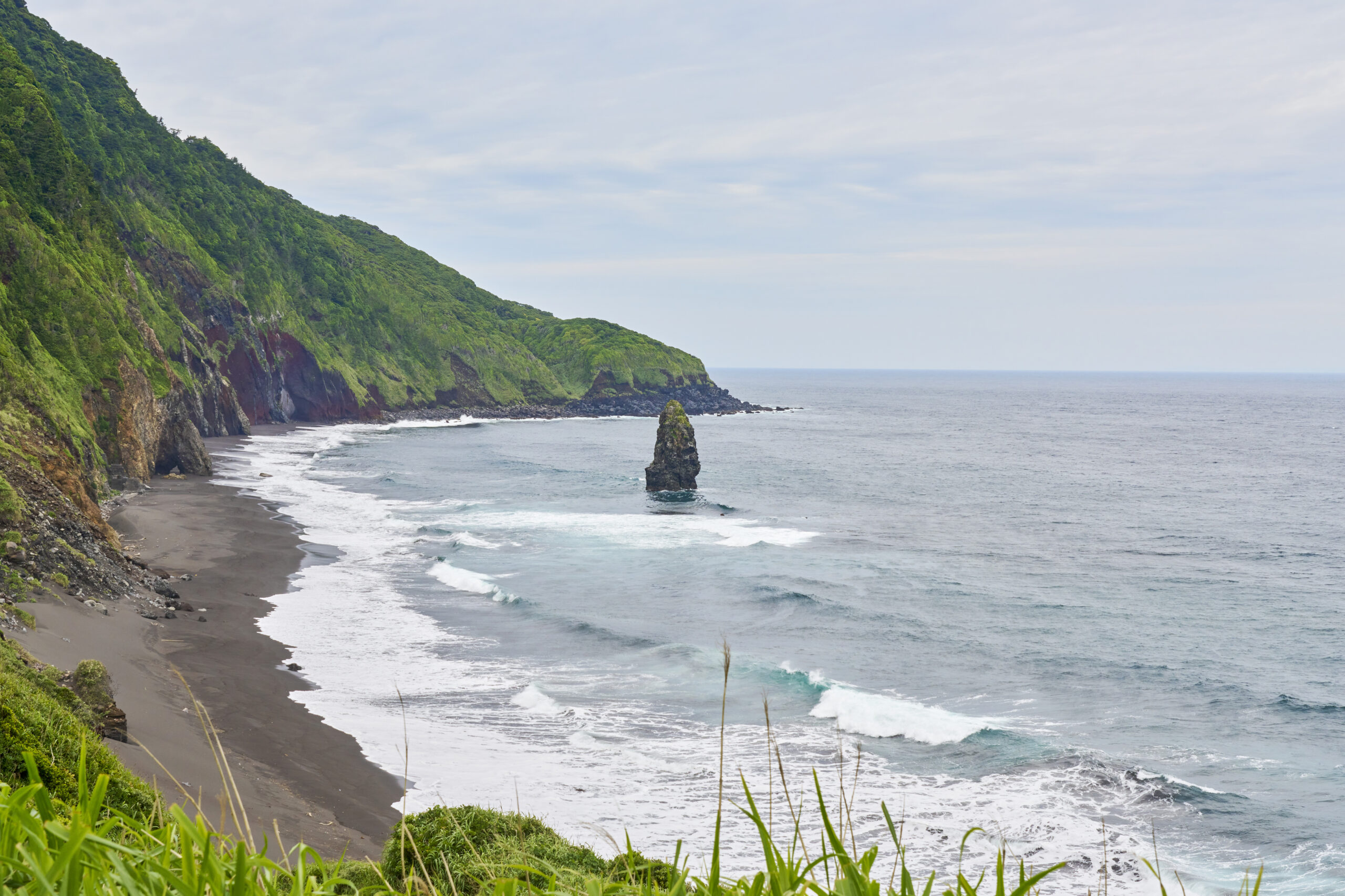
Just a short walk from there is Sanohama Beach, where fine black sand—formed from volcanic minerals and lava rock—stretches out to meet the deep blue sea. Unlike the white sand shores of neighboring Niijima or Shikinejima, Sanohama’s jet-black beach offers a striking and unusual contrast rarely seen in nature.
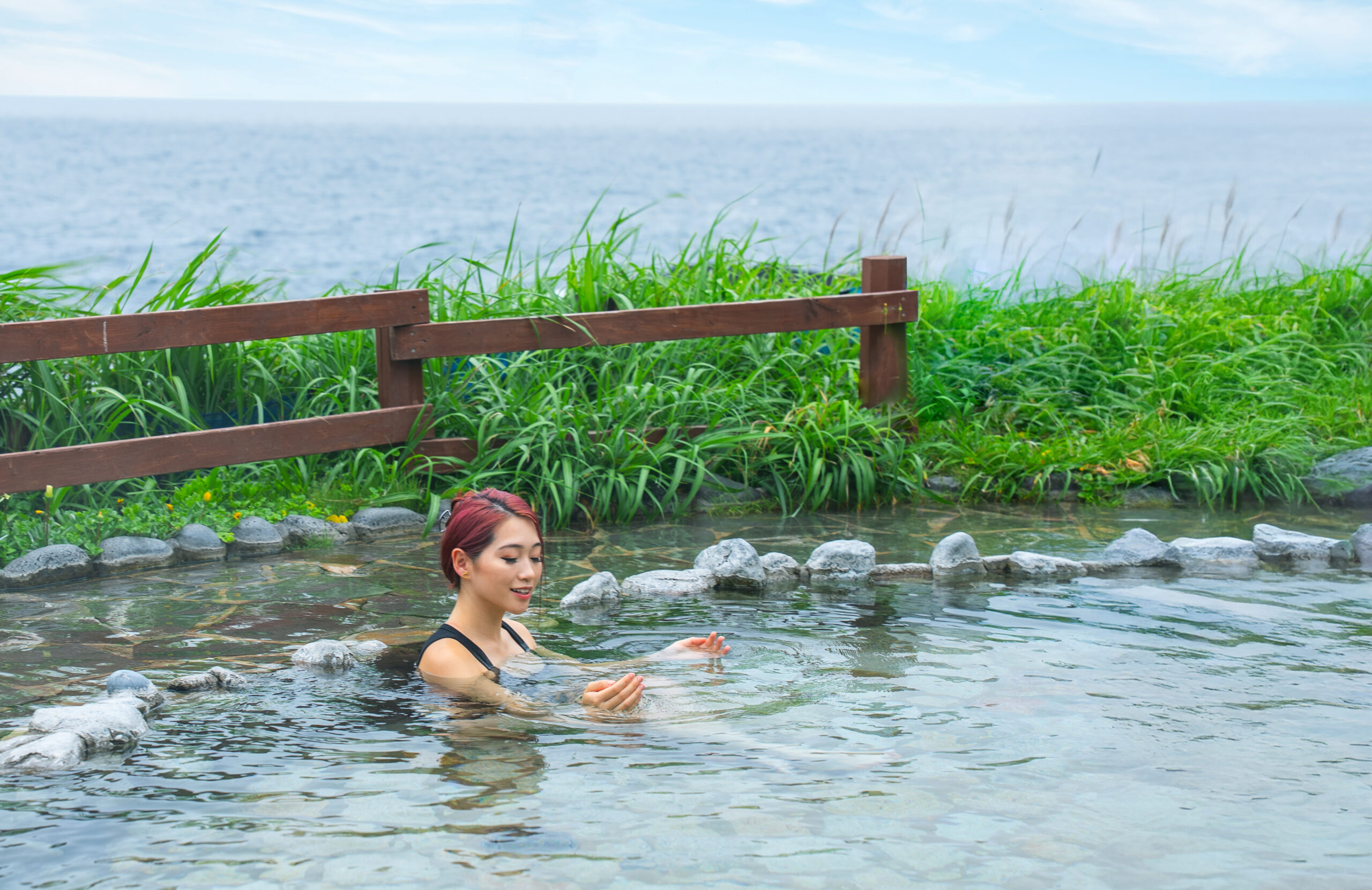
5. Soak and Savor: Motomachi Hamanoyu Onsen and Buratto House
Perched on the rugged coastline of Motomachi Port town, Motomachi Hamanoyu is a popular open-air mixed-bathing hot spring where visitors can soak while overlooking the crashing waves of the Pacific Ocean. Admission is ¥300 for adults and ¥150 for children under middle school age. Bathing suits are required (and available to rent for free). Located above the shoreline with no roof or walls, Hama no Yu is fully exposed to the sea breeze and natural elements, offering a refreshing, immersive way to unwind while staying connected to the island’s dramatic scenery.
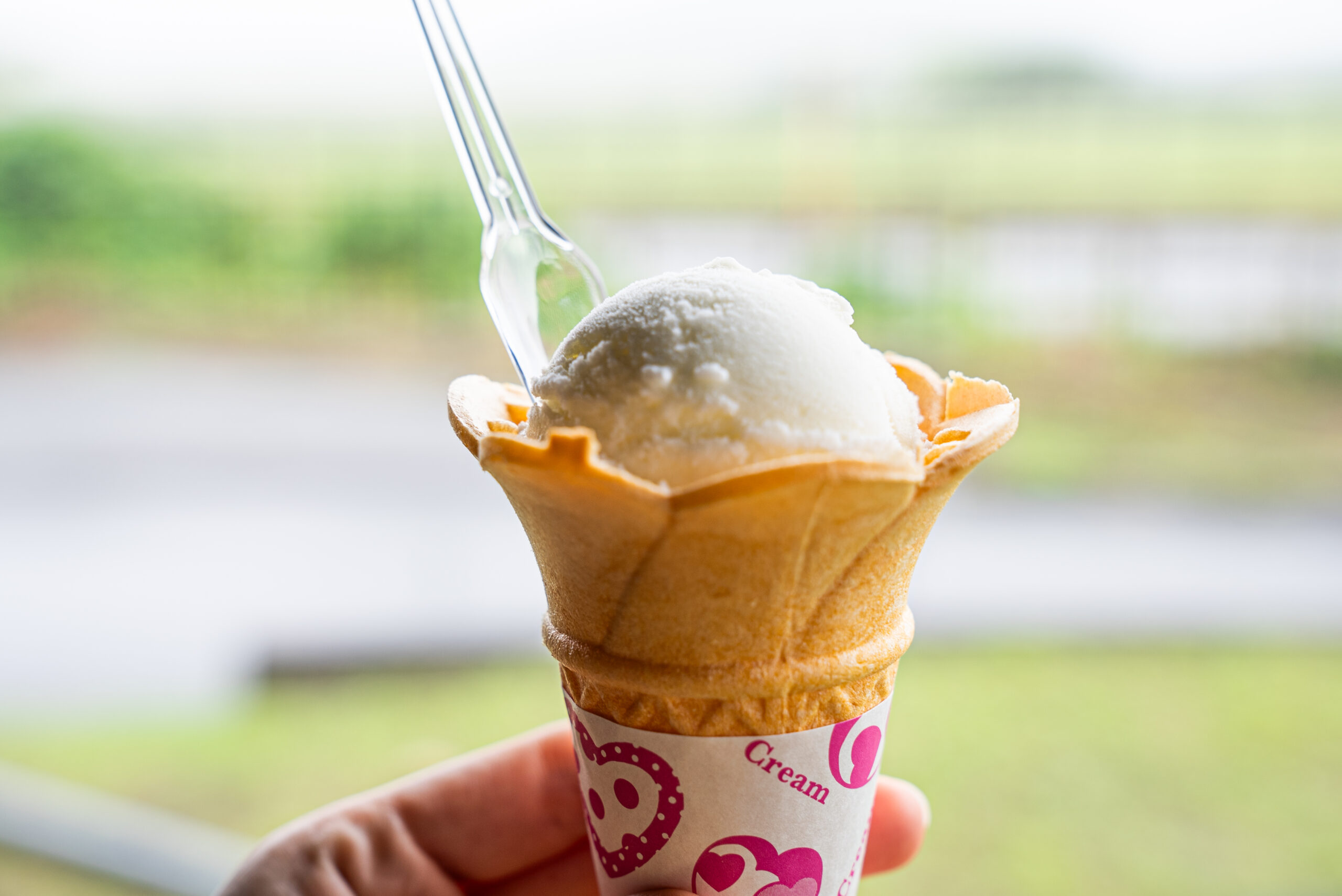
After your soak, those looking to sample more of Oshima’s local flavors should head to Buratto House, a self-sufficient farm about 10 minutes away by car. In addition to serving as a market for local farmers’ produce, it also makes its own dairy products—including milk, butter, and gelato in uniquely island-inspired flavors like camellia flower and ashitaba leaf.
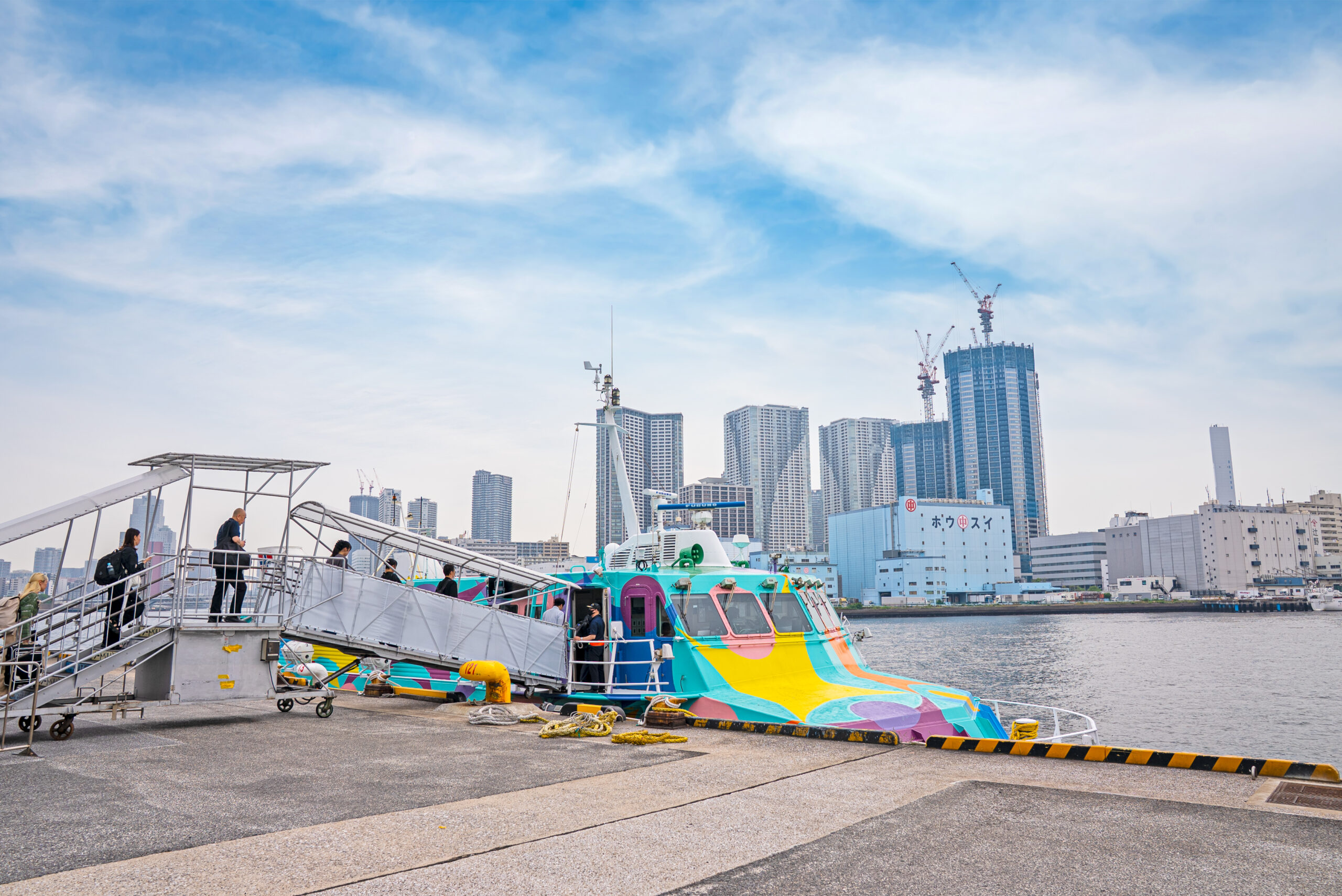
Plan Your Visit: Access and Safety Tips for Oshima
Oshima isn’t just a side trip from Tokyo—it’s a place where many of Japan’s natural environments meet in one striking setting. Volcanic landscapes, tranquil shrines, and bold outdoor adventures all coexist here, making the island a perfect match for both contemplative travelers and thrill-seekers alike.
That said, like any remote destination, Oshima requires a bit of planning to ensure a smooth and enjoyable visit. Here are a few key tips to keep in mind before you go.
Local transportation
While local buses are available, most visitors prefer to explore Oshima by rental car or bicycle—both of which are easy to arrange upon arrival. Most rental services are based at Okata Port, the main ferry terminal, with additional options available near Motomachi Port.
Car & Bicycle Rentals (Okata and Motomachi Port Areas)
- Izu Oshima Rental Car – A range of vehicles starting from ¥4,500 for use within 6hrs.
- JS Auto Rental Car – A range of vehicles starting from ¥3,000 for use within 12hrs.
- Mobil Rental Car – Various rental plans starting at ¥3,300/3hrs.
- Miyoshi Rental Cycle – Electric bikes starting at ¥1,500/2 hrs.
- Toi Store – Standard bicycles from ¥3,000 for 1-day rentals.
- Ranburu Rental Cycle – Various bicycles from ¥500/hour.
Advance reservations are highly recommended. For bookings and inquiries, please contact each rental provider directly. Note that most services operate primarily in Japanese.
Weather Conditions & Opening Hours
Oshima’s outdoor activities and transportation options are highly dependent on weather and sea conditions. Ferry and flight services may be delayed or canceled due to high winds, rough seas, or volcanic activity. Hiking trails, onsen, and other outdoor facilities may also close temporarily for safety reasons. Opening hours for attractions, onsen facilities, and restaurants, including those not mentioned in this article, may vary depending on the season, weather, or local circumstances. Some businesses may close temporarily or operate on reduced hours during off-peak times, such as the rainy season or winter months.
Be sure to check local weather forecasts and official travel advisories before your trip, and keep your itinerary flexible in case of sudden changes. It’s best to also confirm operating hours in advance—either directly with the facility or through the local tourism office—before finalizing your plans. Note that most services operate primarily in Japanese.
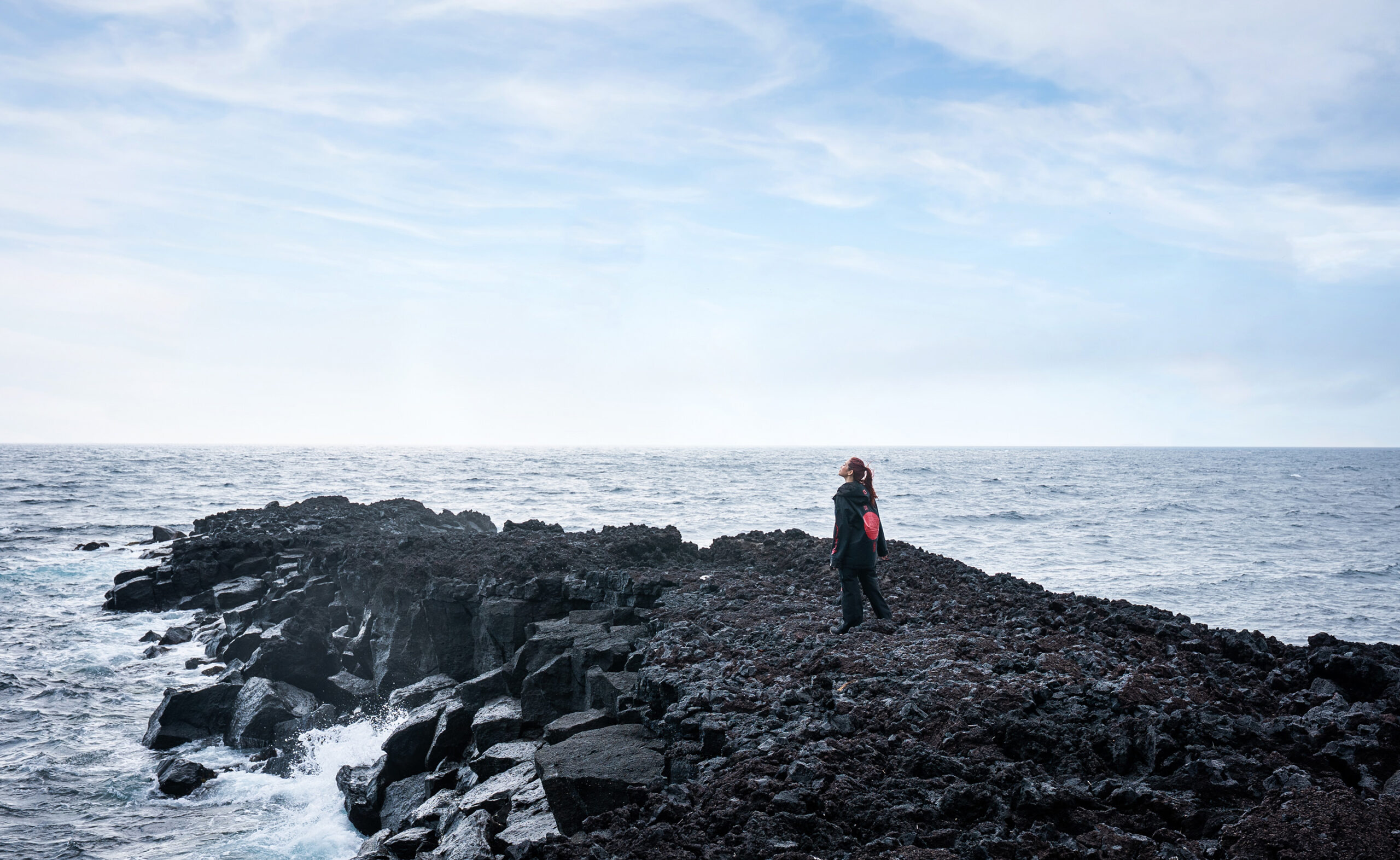
GET TO KNOW Oshima
